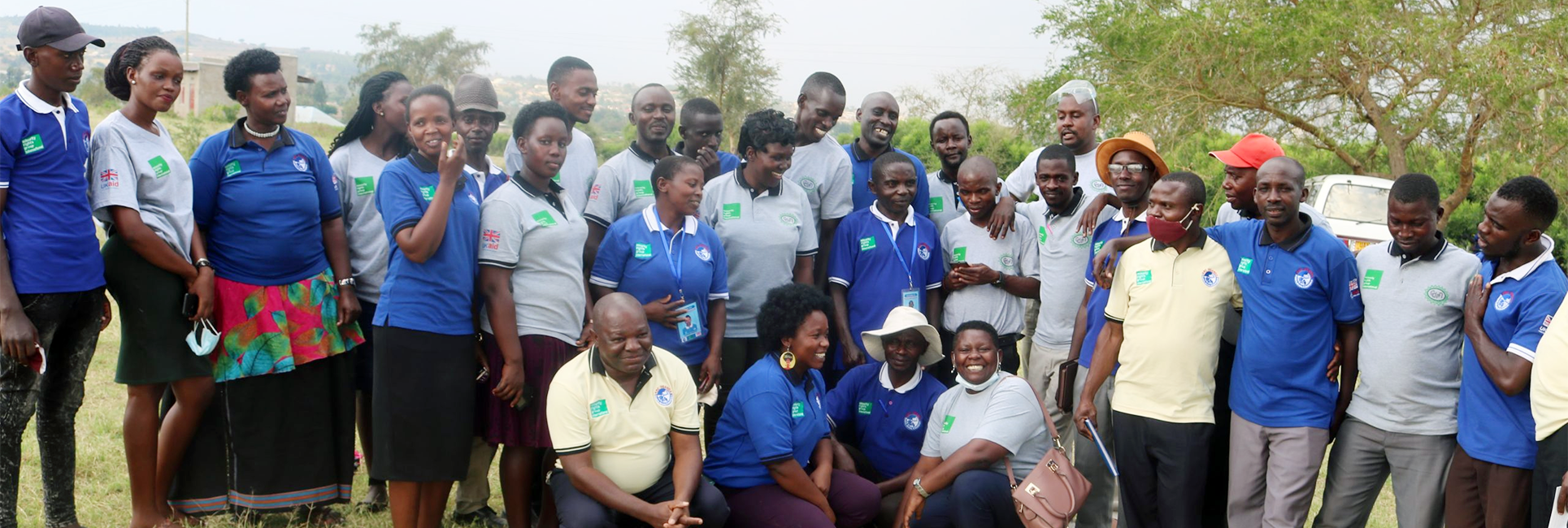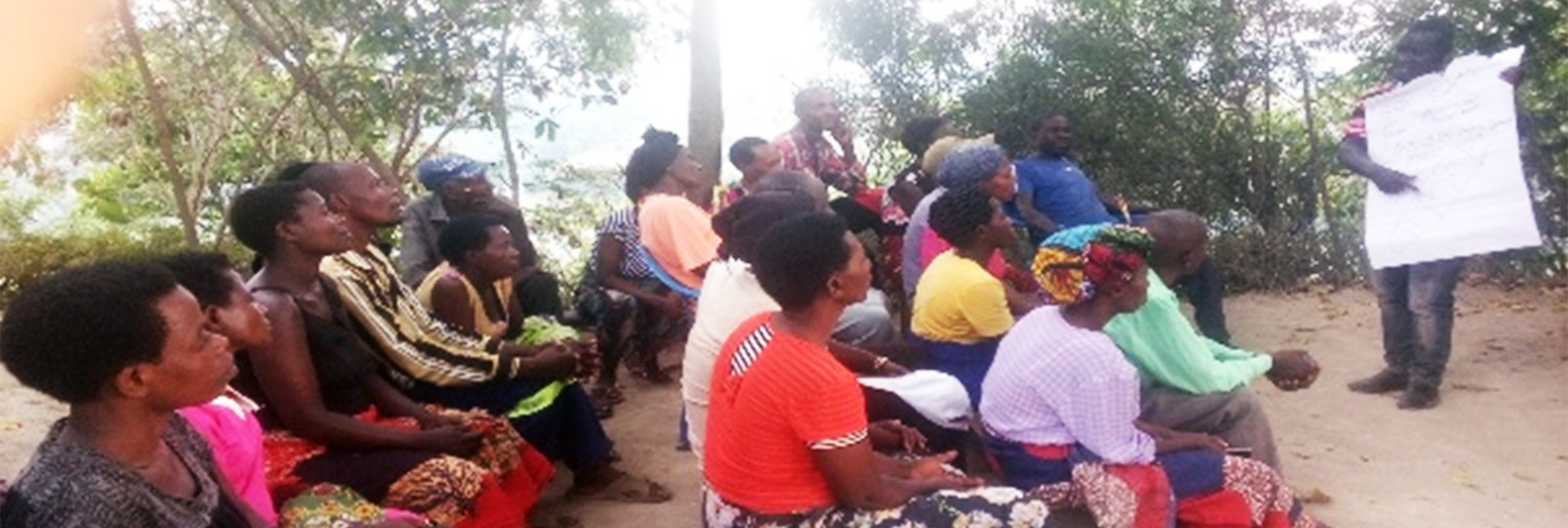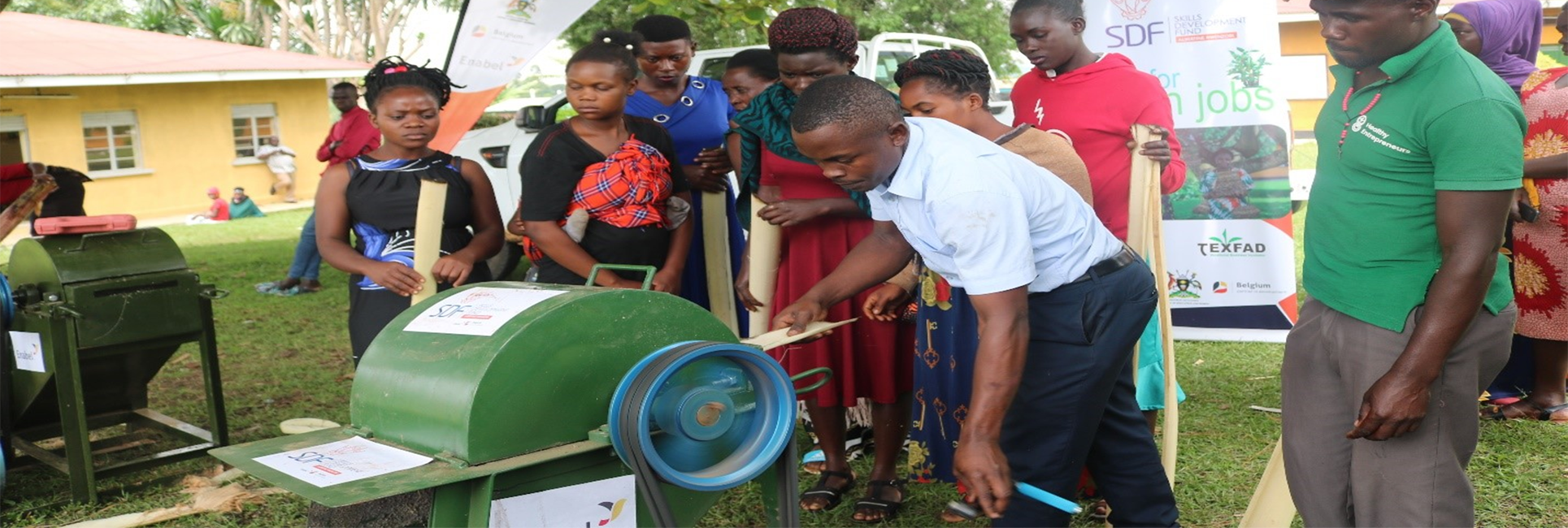Kabarole Research and Resource Centre-Uganda (KRC-Uganda) is a well-established NGO operating countrywide in different regions of Uganda. Founded in 1996, with a research mission and a long-term commitment to understanding the measures and drivers of poverty and its solutions, KRC-Uganda has …
Our Programs
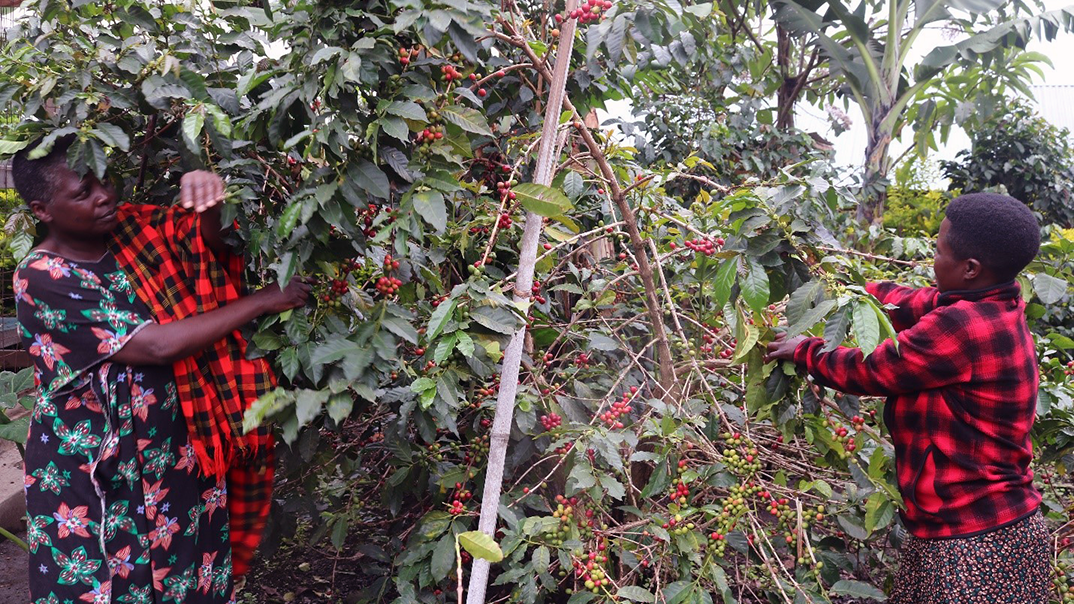
Food Security & Agribusiness
This program plays a vital role in bolstering the efforts of farmers’ organizations by providing comprehensive support across various critical areas of agricultural development.

Information Research & Communications
Since its founding in 1996, KRC has stood by the philosophy that meaningful actionable data is the driver of successful and impactful development programs.
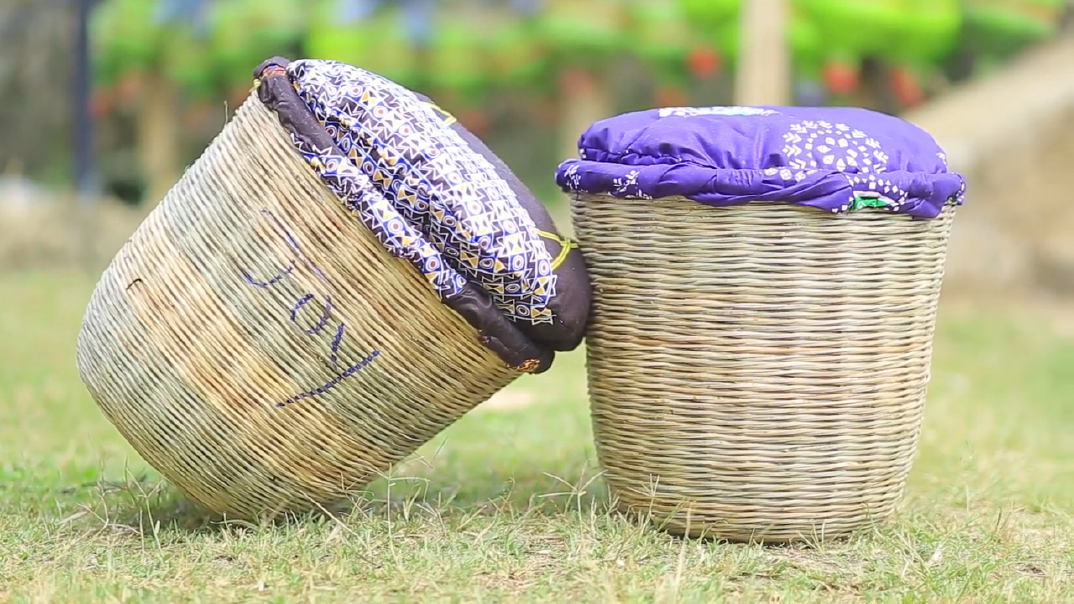
Environment & Energy
As our population grows, so does the pressure on our use of natural resources. Our programs are aligned to sustainable green economic development with the full participation of our communities and stakeholders.
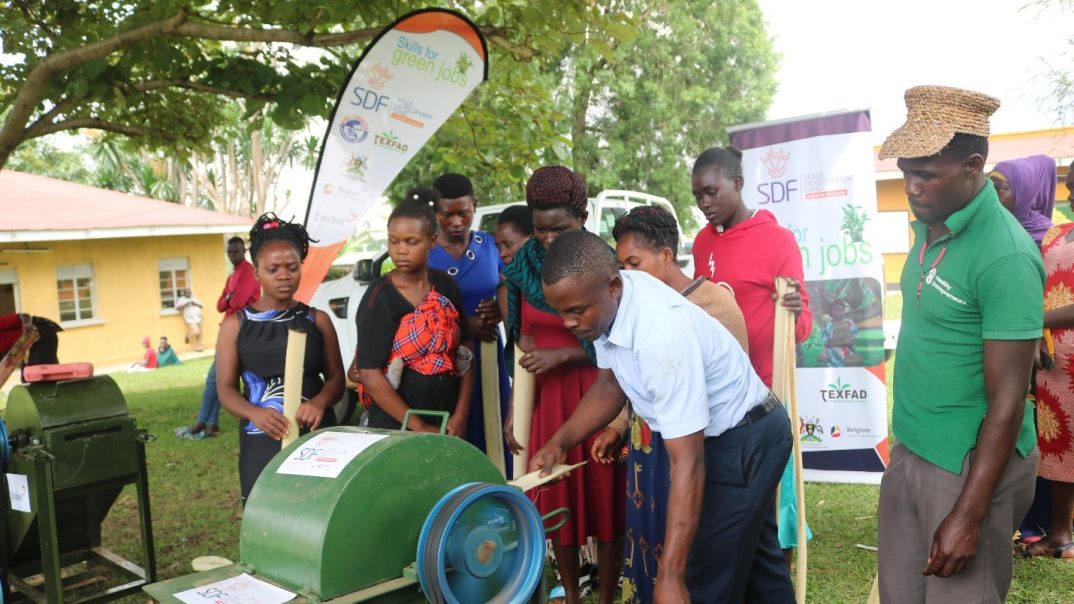
Governance & Policy Advocacy
KRC facilitate spaces for citizens to make their voices heard and exercise their democratic and civic rights. We work with governance structures with the aim of enhancing
News Articles
Enhance your knowledge about what is happening in the Rwenzori Sub Region
Get informed,
Stay Informed
… click to read more articles
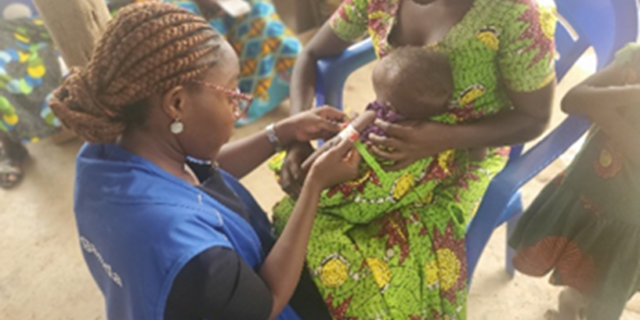
ENHANCING NUTRITION SERVICES IN GOVERNMENT HEALTH SYSTEMS: INSIGHTS FROM KRC-UGANDA’S MCHN+TSFP PROJECT IN KYAKA II REFUGEE SETTLEMENTS
Ms.Sharon assessing the nutrition status of a baby at a Health Centre in Kyaka II refugee settlement KRC-Uganda’s robust Human Resource (HR) department, bolstered by multiple donations, continues to expand its efforts in addressing malnutrition comprehensively in humanitarian settings. Through partnerships with international organizations, KRC-Uganda has evolved from dependency to autonomy, securing substantial multi-year grants, from international organizations like World Food Program (WFP). KRC-Uganda is extending its support to nutrition rehabilitation centers at health facilities, emphasizing the enhancement of multi-sectoral dimensions. Human Resources (HR) ultimately plays a pivotal role in strengthening systems and mobilizing resources. However, there remains a notable gap in the integration of nutrition services across the health systems of hosting districts. The purpose of this study is to evaluate the quality and quantity of nutrition services provided at Bujubuli Health Centre IV in Kyegegwa District, which serves both refugees and nationals, during the month of January 2024. Specifically, the study aims to assess the technical staffing capacity available for nutrition services and supplies. A semi-structured questionnaire was used in a cross-sectional approach, administered to participants, including 12 patients (qualitative) and 2 in-charge and nutritionist of the health facility (also qualitative). Respondents were selected using a combination of simple random and purposive sampling methods. Happy mother and baby walking away with their nutritious foods from the health centre. The findings reveal an average nutritionist-to-patient ratio of 1:700 per day, which is higher than the recommended ratio of 1:400 by the World Health Organization (WHO) in 2013. This nutritionist supports various clinics, including the Young Child Clinic (YCC), ANC, Out-patient Department (OPD), nutrition, and community outreaches, and is required to work day and night shifts for In- patient Therapeutic Care (ITC) admitted cases. The high ratio is justified by the continuous capacity-building platform available for the healthcare team, considering the diminishing funds from donors. However, these high numbers also contribute to long waiting times. Over the last 4 months, there have been no stock-outs of therapeutic feeds. However, there is a growing need for buffer stocks due to the increasing number of clients, especially nationals attracted by the comprehensive services, which has further increased waiting times. KRC-Uganda, the lead nutrition partner, raised the need for more stock, and WFP responded positively. It is worth noting that the District Hospital does not have a nutritionist. With the increasing demand for integrated health and nutrition services, particularly in the face of food insecurities, the primary focus should be on recognizing the importance of the nutrition profession. Therefore, it is recommended that the district prioritizes planning and budgeting for a nutritionist to facilitate robust coordination and collaboration with other stakeholders. Achieving this during KRC-Uganda’s tenure with the district would be a significant success. By Nalunkuuma Sharon, Program Manager, Kyaka II field office KRC-Uganda
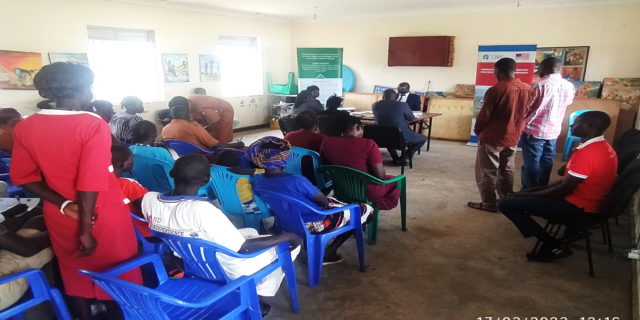
NAVIGATING THE PATH TO JUSTICE: LAND-RELATED OFFENSES IN BIDIBIDI REFUGEE SETTLEMENT
Bidibidi settlement, located in Yumbe district, is the world’s second-largest refugee settlement and the largest in Africa. Covering an area of 250 square kilometers on the Eastern half of the district. According to UNCHR, it houses a total of 42,788 households with a population of 246,312, the majority of whom are refugees (246,310). This population comprises 84% women and children and 3% elderly individuals. The settlement has seen a continuous influx of refugees, driven by escalating political tensions and conflicts in neighboring countries such as the Democratic Republic of Congo (DRC) and South Sudan. KRC-Uganda and their partners during a mobile court in zone 4, Palabek refugee settlement For many refugees from Sudan, South Sudan, Burundi, Ethiopia, and the DRC, Bidibidi settlement has become their new home. Refugees are allocated small pieces of land measuring 30mX30m by the Office of the Prime Minister (OPM), where they seek refuge and attempt to rebuild their lives. However, recent developments have posed challenges to the well-being of refugees in Bidibidi settlement. The World Food Program (WFP), which previously provided food rations to refugees, announced a reduction and potential discontinuation of this assistance due to funding shortfalls. As a result, refugees have been affected by acute malnutrition and starvation especially among children. Many have resorted to land for production while others have turned to activities such as casual laboring, brick making, and charcoal burning to survive. Unfortunately, this situation has also led to an increase in early marriages among young girls. In response to reduced food rations, refugees have sought to acquire more land from the host communities. However, this has presented its own set of challenges, including difficulties in accessing and utilizing the land. Many refugees have voiced concerns about the high costs charged by landlords and instances where landlords reclaim their land before the agreed-upon rental period expires, leading to conflicts. Access to justice for land-related issues has emerged as a critical issue, with many refugees facing obstacles in seeking legal redress. Several factors contribute to these limitations. Firstly, there is a lack of awareness among refugees regarding their land rights, the land tenure system and the legal processes available to them. Additionally, Uganda’s land laws do not explicitly recognize or adequately address the specific land rights of refugees, further complicating their ability to assert their rights. For instance, For instance, land in Yumbe District is communally owned but the existing land laws in Uganda do not explicitly recognize or adequately address the specific land rights of refugees. This limits refugees’ ability to rebuild their lives with dignity and resilience. Negative cultural norms and gender roles also play a part, as certain traditional practices discriminate against women. This is mainly because in male-controlled societies like in Yumbe, women don’t own easily access and own land, therefore making it challenging for them to seek justice. Furthermore, the geographical spread of the settlement poses a significant barrier to accessing legal aid services, as refugees living in remote areas may find it difficult to access these services due long distances and financial limitations to facilitate their travels to the legal aid service centres. To address these challenges, several recommendations have been proposed. These include launching targeted awareness campaigns using community leaders and information dissemination channels to educate refugees on their land-related rights and legal avenues. It is also suggested to establish a mechanism for integrating traditional land-use practices into the legal framework, ensuring cultural sensitivity and respect for refugees’ connections to the land. Regular workshops and information sessions on land-related laws and procedures are recommended to empower refugees with the knowledge needed to protect their land rights. Additionally, establishing legal aid clinics within the settlement or partnering with non-governmental organizations (NGOs) to provide free legal assistance to refugees could improve access to justice. Strengthening Alternative Dispute Resolution (ADR) structures within the settlement is also proposed as a means of resolving conflicts. In conclusion, addressing the challenges faced by refugees in Bidibidi settlement requires a comprehensive approach that includes raising awareness of rights, addressing detrimental cultural practices, and establishing a more accessible judicial system. By empowering refugees with knowledge and providing them with the necessary support, it is possible to ensure that they can seek justice and defend their land rights within the settlement. By Francis Opio Peace Building Project Manager KRC-Uganda

CREATING DEMONSTRATION GARDENS IN ECD CENTERS TO COMBAT MALNUTRITION
Mr. Aheebwa Mubarak- the KRC-Uganda Agricultural Extension Worker supporting the CMC members in establishment of nursery beds Meet Ms. Enid Kyarisima, a vibrant 32-year-old Ugandan woman who lives in Mukondo C with her loving family. She’s a dedicated caregiver (teacher) at Lucky Nursery School in Mukondo C Zone, nestled in the heart of the Kyaka II Refugee Settlement in Kyegegwa District. Lucky Nursery School is part of a special Kulea Watoto project, which is implemented by the International Rescue Committee (IRC) and Kabarole Research and Resource Centre-Uganda (KR-Uganda). This initiative aims to enhance early child development in the settlement. At Lucky Nursery School, Kyarisiima Enid nurtures 235 children aged 3-6 years, providing them with a nurturing environment to learn and grow. The day starts early at 8:00 AM and wraps up at 12:30 PM, packed with activities designed to stimulate young minds. But there’s more to the story. Kulea Watoto goes beyond the classroom, promoting the establishment of demonstration gardens in 53 selected ECD centers, including Lucky Nursery School. These gardens serve multiple purposes, from providing a space for children to engage in outdoor activities to offering practical lessons in nutrition and sustainable living. Mr. Aheebwa guiding the CMC members on how to prepare the main garden for vegetables Kyarisiima Enid is at the forefront of this initiative, working with the Center Management Committee (CMC) whose members were trained by Kulea Watoto to make the most of the available land at the ECD center. Inspired by the training she received, she reached out to the Mother Baby Area (MBA) in Mukondo C, supported by Save the Children, and secured seeds for onions and cabbages. With determination, hard work and training from KRC-Uganda’s extension worker Mr. Aheebwa Mubarak, they cultivated a thriving garden, even in the face of a prolonged drought. Their efforts paid off with a bountiful harvest of 60 heads of cabbage which they sold Shs.1,000 each. This not only benefited the school but also extended to support households in need of a nutritious diet. Their success didn’t stop there. In October 2023, they received more seeds and farming equipment, expanding their efforts to include a wider range of vegetables such as cabbages, Swiss Chards, carrots, green peppers and onions. They also reached out to 10 households with malnourished children to establish their own kitchen gardens. We harvested a combined total of 263 cabbages, which were sold for Shs.1,500 each, resulting in earnings of Shs.394,500. Additionally, we earned Shs.150,000 from the sale of carrots and onions. As of now, we still have 310 heads of cabbages and onions remaining, which are scheduled to be sold in February 2024. Mr. Aheebwa guiding the CMC members on pests and disease management Looking ahead, Kyarisiima Enid and her team have big plans. They aim to expand their garden, cultivate maize and beans, and initiate a school feeding program. Their goal is to ensure that every household in the ECD catchment area has a thriving vegetable garden, promoting self-sufficiency and healthy living. The lead caregiver inspecting the cabbages and carrots ready for harvesting Kyarisiima Enid is grateful for the support and training provided by Kulea Watoto, which has empowered her and the CMC with valuable skills in early child development and sustainable agriculture. With their continued dedication, they are making a tangible difference in the lives of children and families in the settlement. By Katya Rabson Monitoring and Evaluation Officer KRC-Uganda

RISING FROM HUMBLE BEGINNINGS TO A THRIVING BEEKEEPER
old packaging by the group before training by KRC-Uganda Upon completing my final exams, I fell ill unexpectedly. Despite the initial support from friends, some, including my closest companions, lost hope in my recovery and took possession of my belongings, anticipating the worst. Unable to afford medical treatment in Kampala, I was eventually taken to my home village. The illness was attributed to spiritual causes, and the ordeal persisted for six months. Eventually, I was healed, and a church member intervened on my behalf, securing a job for me in a nearby school. Starting my career as a teacher in 2015, I encountered the challenge of not possessing suitable clothing for the role. Despite earning a meagre monthly salary of 100,000 Ugandan Shillings, I had no choice but to accept the position. Through hard work and dedication, I garnered recognition from a sister school, which not only offered me a job but also tripled my salary. I diligently served there for three years until the school encountered financial hardships, leading to optional salary payments. Upon requesting my rightful pay, I was promptly replaced. Local beehives that the group owns for their Apiary project Taking the matter to the labour office, I eventually received my dues in instalments. Three months later, another school offered me a job, albeit far from my home village. The director appreciated my work and appointed me as the deputy head teacher. However, salary payments were irregular, with the director justifying the delay by emphasizing that we should prioritize service due to our position in the system. The year 2020 brought the unexpected challenge of the COVID-19 pandemic, forcing the immediate closure of the school. Financially strained and with no means of transportation for teachers, I returned home with nothing. Exploring various income-generating opportunities, I learned about beekeeping from a resident who made local hives. Starting a group and focusing on apiary, we registered and had our first successful harvest in 2021. The new and modern packaging that the group adopted after the training from the KRC-Uganda Staff. The turning point came when Ms. Alice from KRC-Uganda visited our village. After registering us, youth champions were called for training, emphasizing value addition and marketing. Our production capacity improved, and we began making beehives for sale, harvesting, processing, and packaging honey in a more efficient manner. Even the district showed interest in supporting our activities. Some of the Beehives sold by the group to earn extra income Currently, we sell beehives for 20,000 Ugandan Shillings each and honey in various sizes ranging from 2,000 to 400,000 Ugandan Shillings. In just two years, I have transitioned from being a teacher to becoming a successful beekeeper. I have acquired a motorcycle, land, a laptop, a printer, and expanded my network. KRC-Uganda challenged us to earn at least 3.5 million shillings annually, a goal that I believe I am achieving. I am no longer a job seeker; my journey has been from grass to grace. By Alice Kabajogya Project Assistant Krc-Uganda


